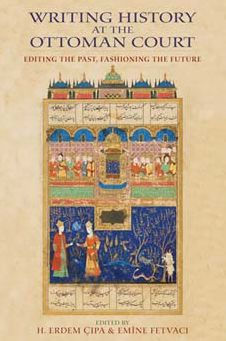Writing History at the Ottoman Court: Editing the Past, Fashioning the Future
Ottoman historical writing of the 15th and 16th centuries played a significant role in fashioning Ottoman identity and institutionalizing the dynastic state structure during this period of rapid imperial expansion. This volume shows how the writing of history achieved these effects by examining the implicit messages conveyed by the texts and illustrations of key manuscripts. It answers such questions as how the Ottomans understood themselves within their court and in relation to non-Ottoman others; how they visualized the ideal ruler; how they defined their culture and place in the world; and what the significance of Islam was in their self-definition.
1112138777
Writing History at the Ottoman Court: Editing the Past, Fashioning the Future
Ottoman historical writing of the 15th and 16th centuries played a significant role in fashioning Ottoman identity and institutionalizing the dynastic state structure during this period of rapid imperial expansion. This volume shows how the writing of history achieved these effects by examining the implicit messages conveyed by the texts and illustrations of key manuscripts. It answers such questions as how the Ottomans understood themselves within their court and in relation to non-Ottoman others; how they visualized the ideal ruler; how they defined their culture and place in the world; and what the significance of Islam was in their self-definition.
25.0
In Stock
5
1

Writing History at the Ottoman Court: Editing the Past, Fashioning the Future
200
Writing History at the Ottoman Court: Editing the Past, Fashioning the Future
200
25.0
In Stock

Product Details
| ISBN-13: | 9780253008640 |
|---|---|
| Publisher: | Indiana University Press |
| Publication date: | 06/06/2013 |
| Pages: | 200 |
| Product dimensions: | 6.10(w) x 9.00(h) x 0.50(d) |
| Age Range: | 18 Years |
About the Author
What People are Saying About This
From the B&N Reads Blog
